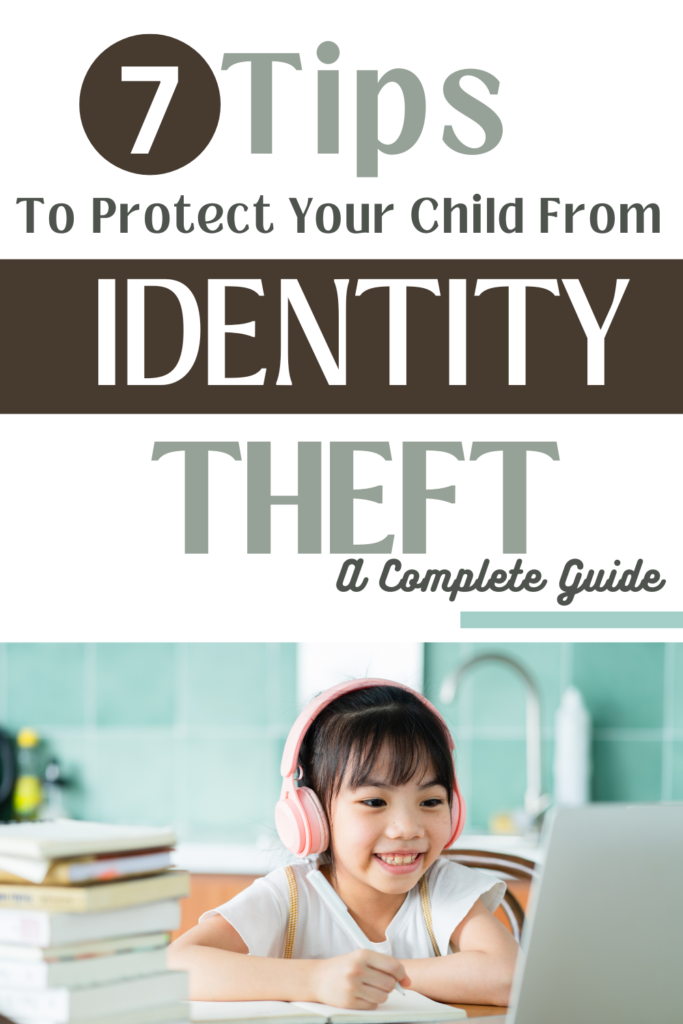 In today’s digital age, where information flows freely and technology plays an integral role in our daily lives, protecting our children from identity theft has become a paramount concern for parents. Identity theft is not limited to adults; children can also fall victim to this malicious crime, often with devastating consequences. This blog post aims to provide a comprehensive guide to protecting your child from identity theft, while offering practical tips and insights to ensure their digital safety.
In today’s digital age, where information flows freely and technology plays an integral role in our daily lives, protecting our children from identity theft has become a paramount concern for parents. Identity theft is not limited to adults; children can also fall victim to this malicious crime, often with devastating consequences. This blog post aims to provide a comprehensive guide to protecting your child from identity theft, while offering practical tips and insights to ensure their digital safety.
Understanding the Risks:
Before delving into protective measures, it’s crucial to understand the potential risks and vulnerabilities that make children susceptible to identity theft. Children’s clean credit histories and the fact that their identities are not actively monitored can make them appealing targets for identity thieves. Moreover, their limited digital literacy may expose them to online risks, such as oversharing personal information on social media platforms or falling victim to phishing scams. Let’s get started.
1.Educate Your Child
One of the most effective ways to protect your child from identity theft is through education. Teach your child about the importance of personal information and the potential risks associated with sharing it online. Explain the concept of identity theft in age-appropriate terms, highlighting the importance of keeping sensitive information confidential.
Encourage open communication about online experiences, making sure your child feels comfortable discussing any concerns or encounters that may seem suspicious. Instilling a sense of digital responsibility early on can empower your child to make informed decisions regarding their online activities.
2. Monitor Online Activity:
Regularly monitoring your child’s online activity is a crucial aspect of protecting them from identity theft. Keep an eye on the websites they visit, the apps they use, and their social media interactions. Ensure that their privacy settings are configured to limit the visibility of personal information to friends and family only.
Consider using parental control tools and monitoring software to track your child’s online behavior. These tools can provide insights into the websites they visit, the content they access, and their overall digital habits. However, it’s essential to strike a balance between monitoring and respecting their privacy to foster trust.
3. Secure Personal Documents:
Identity theft doesn’t only occur in the digital realm; physical documents can also be targeted. Safeguard personal documents, such as birth certificates, Social Security cards, and medical records, in a secure and locked location. Educate your child about the importance of keeping such documents safe and the potential consequences of misplacing them.
Additionally, be cautious when sharing your child’s Social Security number, especially when it’s not required. Many organizations, such as schools and healthcare providers, may request this information, but it’s crucial to inquire about the necessity and security measures in place to protect the data.
4. Teach Strong Password Practices:
As your child starts using digital devices and creating online accounts, instill the importance of strong and unique passwords. Encourage them to use a combination of letters, numbers, and special characters, and avoid easily guessable information, such as birthdays or names. Emphasize the significance of not sharing passwords with anyone, even close friends.
Consider using a password manager to help your child securely store and manage their passwords. This not only enhances security but also simplifies the process of maintaining multiple strong passwords across various platforms.
5. Be Wary of Social Engineering: (Protecting Your Child from Identity Theft)
Identity thieves often exploit social engineering tactics to manipulate individuals into divulging sensitive information. Teach your child to be skeptical of unsolicited messages or requests for personal information, even if they seem legitimate. Emphasize the importance of verifying the identity of individuals or organizations before sharing any personal details.
Discuss common social engineering tactics, such as phishing emails or phone scams, and provide practical examples to help your child recognize potential threats. By fostering a healthy skepticism, you empower your child to navigate the digital landscape with caution.
6. Regularly Check Their Credit Report:
While it may seem unusual to check a child’s credit report, it can be a proactive measure to detect potential identity theft early on. Some identity thieves target children’s information precisely because it often goes unnoticed for an extended period. Obtain a copy of your child’s credit report at least once a year to check for any unauthorized accounts or suspicious activity.
If your child does not have a credit history, consider placing a credit freeze on their behalf. This adds an extra layer of protection, making it more challenging for identity thieves to open fraudulent accounts using your child’s information.
7. Stay Informed about Data Breaches:
In an interconnected world, data breaches are unfortunately common. Stay informed about any data breaches that may have exposed your child’s information. Many organizations offer notification services that alert individuals if their data has been compromised. Take immediate action if you receive such a notification, whether it’s changing passwords or monitoring accounts for suspicious activity.
Related Post: 10 Ways to Protect Yourself from Identity Theft

Conclusion: (A Guide to Protecting Your Child from Identity Theft)
Protecting your child from identity theft requires a proactive and multi-faceted approach. By combining education, communication, and technological safeguards, you can significantly reduce the risk of your child falling victim to this pervasive crime. Stay vigilant, monitor online activities, and instill a sense of digital responsibility to empower your child to navigate the digital world securely. Together, as parents and guardians, we can create a safer online environment for our children, allowing them to explore and learn without the looming threat of identity theft.
What other tips would you add to the list? Let us know in the comments below.
Cheers!







